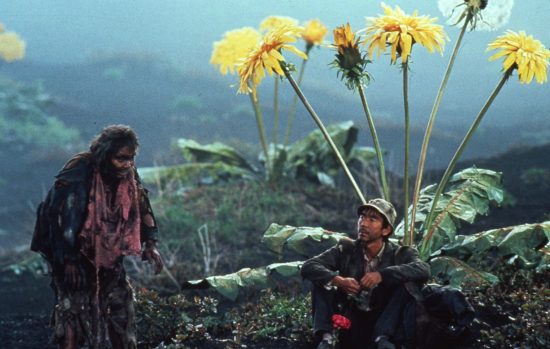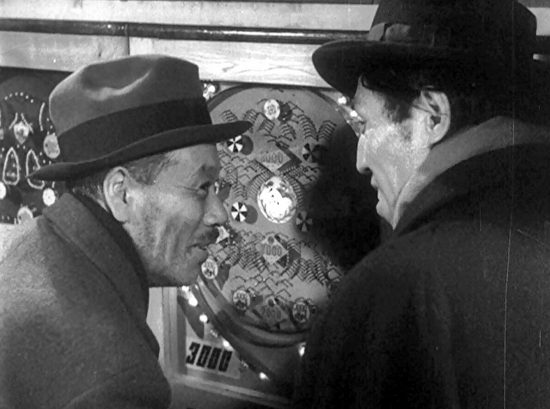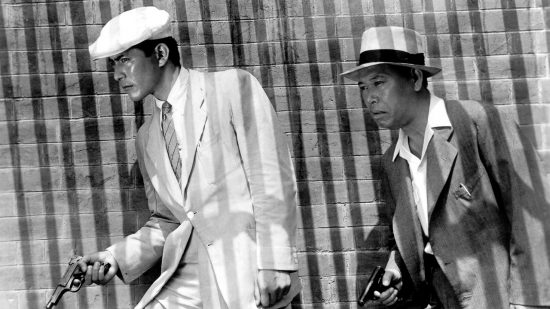Akira Kurosawa’s best Non-Samurai Films
Akira Kurosawa directed thirty films over five decades that covered a number of different genres. The Japanese filmmaker is regarded as one of the most important and influential filmmakers in the history of cinema. While his samurai films such as Rashomon, Seven Samurai, Throne of Blood, The Hidden Fortress are often the most talked about of his work, he made films in many different genres. All are worth a watch, but here are just a few of them to get you started.
Ikuru (aka To Live) – 1952
Takashi Shimura plays a Tokyo bureaucrat called Watanabe who discovers he has a terminal illness. Trying to cope with this he realizes his life has little meaning. During his remaining time he tries to find some meaning in his life and do something significant before he dies. Kurosawa and Shimura take us on a journey that looks deeply at both life and death. One scene sees a character compare pachinko to life itself by saying “See this little silver ball? That is you, that’s your life.” Pachinko is comparable to that of the slot machine in the West as a form of low-stakes, low-strategy gambling. It you care to have a play online of various games then check out https://vulkanvegas.com/hu. Ikuru is a deeply moving film that everyone should watch. It was also remade in a film called Living which starred Bill Nighy as the main character.
Drunken Angel – 1948
This film was the first of sixteen film collaborations between Kurosawa and Toshiro Mifune. In this classic crime film, Mifune plays a gangster who visits a doctor played by Takashi Shimura. The doctor tries to help the gangster turn his life around to help deal with tuberculosis. His health starts improving until a Yakuza boss starts taking a close interest in him. This was one of the few films of Kurosawa’s that dealt with the Yakuza. What follows is a great thriller that could have just been a standard gangster flick. However, it is lifted to the next level by the direction and performances of all involved.
Stray Dog – 1949
Takashi Shimura and Toshiro Mifune team up again. Mifune is a rookie police detective whose gun is stolen and subsequently used in a crime. He seeks the aid of a detective, played by Shimura, to find the gun. They slowly track down the criminal all over Tokyo, but not before the gun has been used again and again. This was one of the first police procedural dramas and its influence can be seen in the likes of Lethal Weapon and other buddy cop movies.
High and Low – 1963
This tense police procedural crime thriller sees Toshiro Mifune playing Kingo Gondo, an executive about to put all his money into a new business deal. Before that happens he is told his son has been kidnapped and he must pay the ransom. He dismisses the report as his son walks into the room. However, it turns out that it was the son of his chauffeur was mistakenly kidnapped instead. The ransom demand still stands so Gondo must decide whether to go through with the business deal or pay the ransom for another man’s son. What sets the film apart from others in he genre is the way we follow different people in each of the three acts – Gondo, the Police and finally, the Kidnapper.
Sanshiro Sugata – 1943
This was Kurosawa’s directorial debut and was released by Toho Studios. He had previously spent six years spent as an assistant director and screenwriter. The film was based on a novel by Tsuneo Tomita about the rivalry between judo and jujitsu and resulted in a fantastic martial arts thriller. The film also shows just how skilled Kurosawa was from the beginning. It also features many filmmaking techniques that would go on to be trademarks for many of his films. Kurosawa also directed the 1945 sequel, Sanshiro Sugata Part II.
Dreams – 1990

This was one of Kurosawa’s final films. Rather than a full feature, the film is composed of eight vignettes – Sunshine Through the Rain, The Peach Orchard, The Blizzard, The Tunnel, Crows, Mount Fuji in Red, The Weeping Demon, Village of the Watermills – written and directed by Akira Kurosawa. He said that the vignettes were all inspired by actual recurring dreams he had over the years. It is quite different from Kurosawa’s other films and can take a moment to wrap your head around it. Definitely worth rewatching as you get more from it on each viewing. Plus it features Martin Scorsese as Vincent Van Gogh.
There you have it, just a few other Akira Kurosawa films that are all well worth you viewing time.











